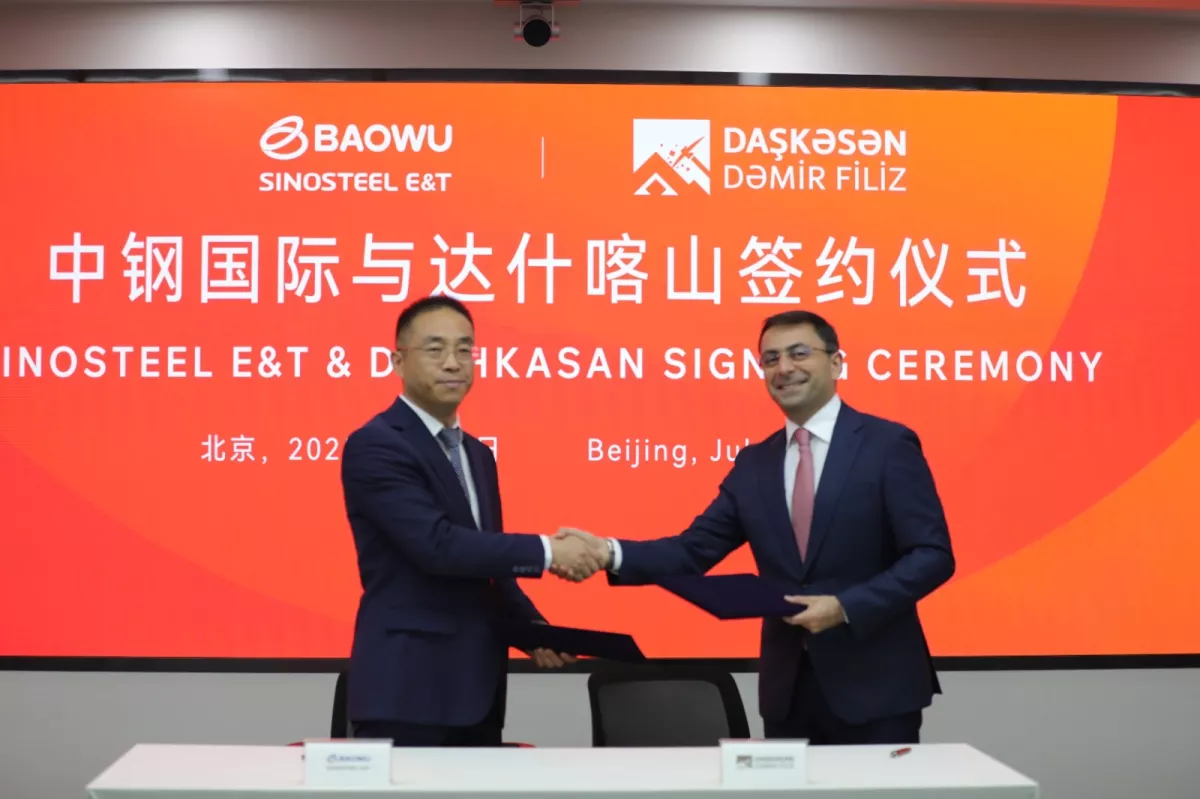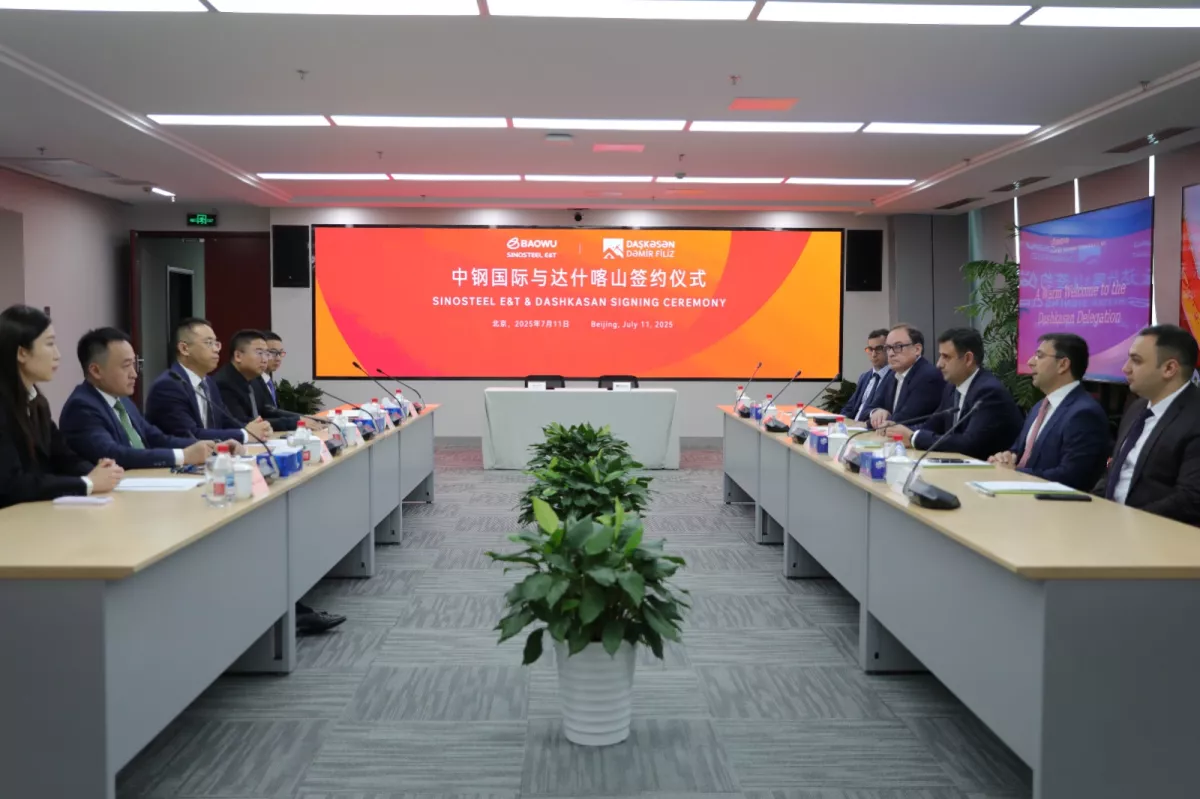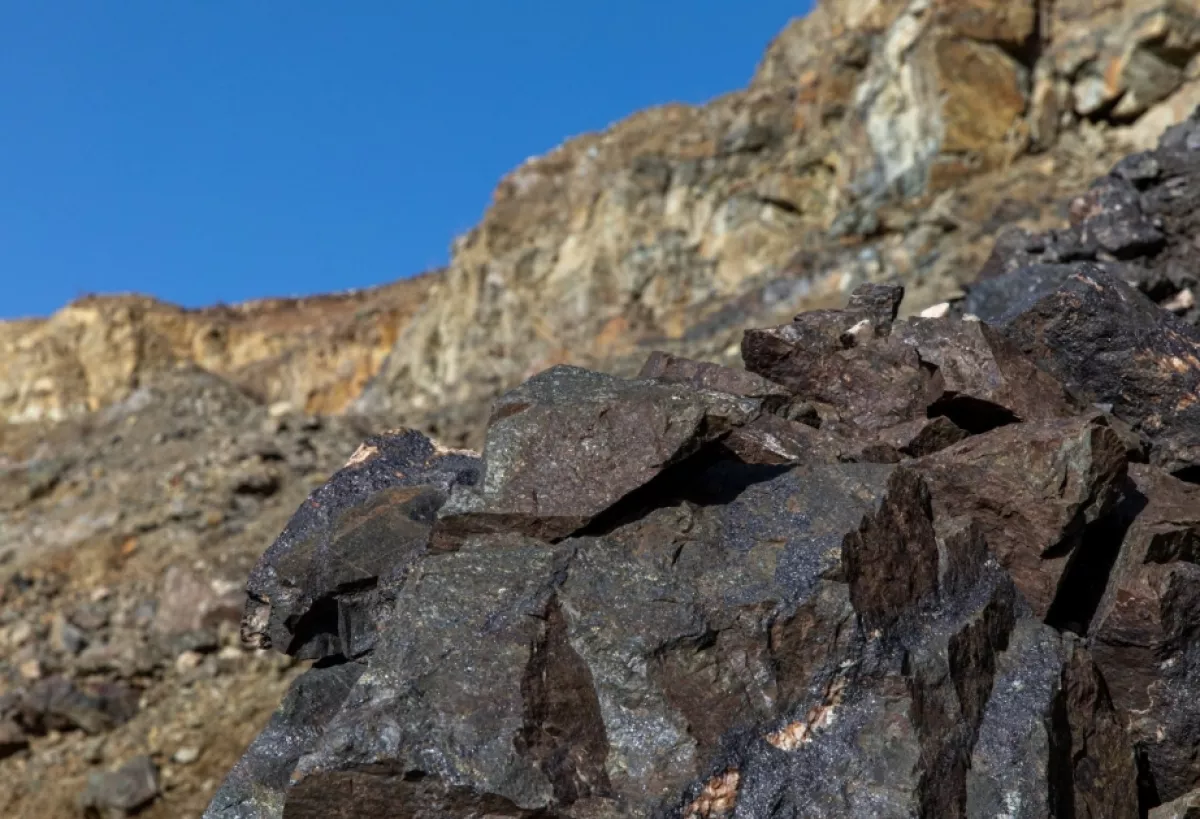Revival of Azerbaijan’s ferrous metallurgy The steel belt of the economy
A key pillar of Azerbaijan’s new industrialisation strategy is to reduce the reliance of domestic ferrous metallurgy enterprises on imported raw materials by establishing a full-cycle metallurgical complex within the country. To this end, Dashkasan Iron Ore LLC (DDF), a subsidiary of AzerGold CJSC, recently signed a consulting agreement with the Chinese company Sinosteel Equipment & Engineering Co., Ltd. The partnership focuses on developing both economic and environmental solutions for operating Dashkasan — the largest iron ore deposit in the region.
The next phase will involve attracting foreign investors to create a complete production chain, covering everything from ore processing and concentrate production to steel smelting and the manufacture of finished products.

Historically, despite possessing the largest iron ore deposits in the South Caucasus, Azerbaijan’s metallurgical complex during the Soviet era mainly processed finished pig iron and steel raw materials supplied from metallurgical plants in Russia, Ukraine, Kazakhstan, and Georgia. Because the country lacked a fully integrated production cycle for ferrous metals, between 1954 and 1994, iron ore extracted from the most profitable section of the Dashkasan deposit was processed into iron ore concentrate and, along with local fluxes and bentonites, shipped to Georgia’s Rustavi Metallurgical Plant for smelting. The resulting pig iron blanks were then sent back to Azerbaijan in a reverse flow.
However, the market realities of the post-Soviet era, combined with the outdated technology of domestic mines and processing facilities, made such export schemes unprofitable. Consequently, over the past three decades, operations at the Dashkasan enterprise have largely been dormant. Previous attempts to privatise the Dashkasan Ore Processing Plant (OJSC Dashkasan Filizsaflashdirma) and to attract investors to establish a complete metallurgical production cycle have also ended unsuccessfully.

A fundamental breakthrough in this sector occurred in 2020 following a directive from the President of Azerbaijan, Ilham Aliyev, which assigned the state-owned AzerGold CJSC full responsibility for all work related to the commissioning of the Dashkasan iron ore deposit. Consequently, Dashkasan Iron Ore LLC was established as a subsidiary and began preparations for operational activities.
In particular, at the initial stage, studies were conducted to assess the ore resources at two deposits within the Dashkasan complex — “North-West” and “South-East.” As a result of exploration at both deposits, an additional 70 million tonnes of resources were identified. Following a revaluation of mineral resources according to international standards, the total volume of ore reserves increased to 309.16 million tonnes.
According to a 21-year exploitation plan for these deposits, work on stripping and extraction began in June 2022 at the South-East deposit. By early 2024, operations had processed 6.5 million tonnes, with an accumulation of 1.8 million tonnes of ore reserves.
Last year, LLC specialists continued research activities, including geochemical analysis of samples obtained through drilling. Additionally, successful tests were completed, resulting in the production, for the first time in the history of the Dashkasan deposit group, of a concentrate containing up to 69% iron and hot-briquetted iron with metallization up to 97% in laboratory conditions.
Based on these results, an updated strategy and the corresponding project roadmap were prepared and approved.
Exploration and detailed analyses at the deposit laid the foundation for the preparation of a comprehensive bankable feasibility study (BFS). Since mid-last year, Dashkasan Iron Ore LLC has been negotiating with several leading global consulting firms specialising in this field to reassess mineral resource volumes and develop a new mining plan.

Recently, in Beijing, the subsidiary of AzerGold CJSC — Dashkasan Iron Ore LLC — signed an agreement with the Chinese company Sinosteel Equipment & Engineering Co., Ltd., which will be responsible for preparing the project’s feasibility study. Sinosteel Equipment & Engineering Co., Ltd. specialises in processing metallurgical raw materials, supply, and metallurgical technologies and has extensive experience in developing iron ore deposits not only in the Chinese market but also in Türkiye, Australia, South Africa, Algeria, India, and others.
Under the terms of the $2.45 million, two-year agreement, the Chinese consultant will prepare the feasibility study, determining the volume of economically viable ore, suitable technologies, the scale of engineering and construction work, and environmentally responsible approaches to deposit exploitation. This document will serve as the basis for attracting international financial institutions, potential investors, and banks.
Given the high investment cost of the project and in order to secure its financing without placing additional burdens on the state budget, AzerGold specialists are negotiating with a number of major potential partner companies. Their ultimate goal is to attract foreign investment and develop the Dashkasan iron ore deposit — establishing a full production chain from ore to finished products.
The prospects for attracting partners represent a rather complex challenge, considering that the global market is currently experiencing a deep structural crisis characterised by overproduction, falling prices, and excess capacity. According to the Organisation for Economic Co-operation and Development (OECD), in 2025, the global surplus of steelmaking capacity exceeded 560 million tonnes, and with announced projects, it could reach 721 million tonnes by 2027. The greatest pressure comes from China, which maintains steel production at around 1 billion tonnes per year — more than half of the world’s output — while domestic demand is stagnating due to a prolonged crisis in the housing construction sector. Excess Chinese steel is exported, and this dumping undermines price stability in other countries. Steel prices have reached five-year lows, with the cost of hot-rolled coil in Asia falling to $500–520 per tonne, primarily due to Chinese dumping.
In this regard, work on the Dashkasan deposit in Azerbaijan is not being accelerated for now: the Chinese consultant will require two years to prepare the feasibility study, followed by tender procedures for selecting investors and contractors. Experts estimate that a more favourable steel market environment is expected around 2028.

According to some estimates, the modernisation project for the mines and the ore processing plant will require about 1.7 billion manats ($1 billion). Significant investments will be directed towards the construction of a beneficiation plant for concentrate production. Considering the relatively low iron content (an average of 40%) in the Dashkasan deposit ore, these ores will need to be enriched to a minimum of 67%.
It is expected that instead of the outdated and worn cableway leading to the village of Gushchu, the concentrate will be transported via a 45-kilometre slurry pipeline to the administrative region of Ganja, where a plant is planned to be built for the production of an intermediate iron-containing product — pellets — meeting technical and chemical specifications suitable for producing the final product. In particular, the pellets will be sent to an HBI plant for the production of Hot Briquetted Iron (HBI) with an iron content of 95%.
At the subsequent stages of establishing a full metallurgical cycle in Azerbaijan, capacities will be created to remelt the highly concentrated raw materials produced in Ganja using electric arc furnaces. The steel obtained will be used to manufacture pipes, construction rebar, channels, rails, steel wire, as well as other types of profile rolled metal products.
Azerbaijan is experiencing huge demand for various types of steel products due to large-scale construction projects in the liberated territories, not to mention the needs of the residential construction sector and industrial clusters. The country’s annual total domestic demand for steel products is estimated at approximately $1.2–1.4 billion, with more than two-thirds of this volume traditionally met through imports. Consequently, the establishment of a full-cycle metallurgical complex in Azerbaijan will result in significant savings in foreign currency reserves.








